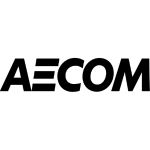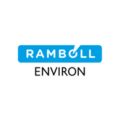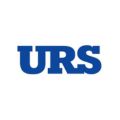
Overview
The Environmental Impact Assessment (EIA) industry focuses on evaluating the potential environmental effects of proposed projects, like factories, mines, or infrastructure developments. These assessments involve scientific studies, public consultations, and mitigation planning to minimize negative impacts on air, water, land, and communities. EIAs play a crucial role in promoting sustainable development by informing decision-making and ensuring environmental protection alongside economic growth.
Depending on specific features and functions, GAO Tek’s Anemometers are sometimes referred to as airflow gauges, wind speed indicators, wind detectors, wind metres, wind gauging devices, atmospheric velocity sensors, breezometers, air speed indicators, gust detectors, wind velocity monitors, wind speed trackers, air movement sensors, wind flow metres, and aerodynamic velocity gauges.
Furthermore, GAO Tek’s anemometers are further grouped into:
Air Speed and Humidity Measurement, Air Volume Measurement, Temperature and Humidity Measurement, Wind Chill Measurement, Benchtop, Cup, Dust and Waterproof, Handheld, High-Precision, Hot-Wire, Industrial, Pressure, Rugged Wind Gauges, Thermal, Ultrasonic, Weather Monitoring, Wind Speed and Direction Gauges, and Wind Vane
GAO Tek’s Anemometer has the following applications in the environmental impact assessments industry:
- Assessing Air Quality: GAO’s anemometers are used to measure wind speed and direction, which is crucial for understanding how air pollutants disperse in the atmosphere. This information is essential for assessing the potential impact of a project on air quality, such as a new factory or power plant.
- Evaluating Noise Pollution: Wind speed and direction can affect how noise travels, so GAO’s anemometers are used to help assess the potential impact of a project on noise levels in the surrounding area. This information is important for mitigating noise pollution and protecting nearby communities.
- Studying Climate Change: GAO’s anemometers are used to collect long-term wind data, which is essential for studying climate change and its potential impacts. This information can be used to assess the vulnerability of a project to climate change and to develop appropriate adaptation strategies.
- Assessing Wind Energy Potential: GAO’s anemometers are used to measure wind speed and direction at potential wind farm sites. This information is crucial for assessing the feasibility of a wind energy project and determining the amount of electricity that could be generated.
- Modelling Dispersion of Emissions: GAO’s anemometers are used to collect wind data that is used in computer models to simulate the dispersion of air pollutants and other emissions from a project. This information is used to assess the potential impact of the project on air quality and public health.
- Supporting Habitat Assessments: Wind data collected by GAO’s anemometers can be used to assess the potential impact of a project on wildlife, particularly for bird migration patterns and habitat suitability. This information is important for mitigating any negative impacts on biodiversity.
More information on anemometers and their applications in other industries can be found on
This category page lists related products and
Systems in the Environmental Impact Assessments Industry Utilizing Anemometers
Here are some popular systems in the environmental impact assessments industry using anemometers:
Micrometeorological Monitoring Systems:
- These systems use a network of anemometers and other sensors to measure wind speed, direction, temperature, humidity, and other atmospheric variables at high temporal resolution. This data is used to assess the local air quality and to study the dispersion of pollutants.
Sonic Detection and Ranging (SODAR) Systems:
- These systems use sound waves to measure wind speed and direction at various heights above the ground. This information is used to assess the impact of a project on air quality and noise levels.
Lidar (Light Detection and Ranging) Systems:
- These systems use laser light to measure wind speed and direction at various heights above the ground. This information is like SODAR systems but can provide higher resolution data in some cases.
Meteorological Towers:
- These tall towers are equipped with anemometers and other sensors to measure wind speed, direction, temperature, humidity, and other atmospheric variables at multiple heights. This data is used to assess the impact of a project on climate and to study long-term trends in wind patterns.
Portable Monitoring Stations:
- These self-contained units are equipped with anemometers and other sensors to collect data on wind speed, direction, air quality, and other environmental parameters at specific locations. This data is used to assess the short-term impact of a project on the environment.
Remote Sensing Systems:
- These systems use satellites and aircraft to collect data on wind speed and direction over large areas. This data is used to assess the regional impact of a project on air quality and climate.
GAO Tek’s targeted markets are North America, particularly the U.S. and Canada.
Complying with Government Regulations
GAO Tek’s anemometers comply or help our customers comply with the U.S. government regulations such as:
- Clean Air Act
- National Environmental Policy Act (NEPA)
- Clean Water Act
- Endangered Species Act
- National Ambient Air Quality Standards (NAAQS)
- Federal Aviation Administration (FAA) Regulations
- Noise Control Act
- Coastal Zone Management Act (CZMA)
GAO Tek’s anemometers comply or help our customers comply with the Canadian government regulations such as:
- Canadian Environmental Protection Act (CEPA)
- Canadian Environmental Assessment Act (CEAA)
- Fisheries Act
- Species at Risk Act (SARA)
- Canadian Ambient Air Quality Standards (CAAQS)
- Navigable Waters Protection Act (NWPA)
- Canadian Aviation Regulations (CARs)
- Canadian Noise Emission Standards for Equipment (CNESE)
Case Studies of Anemometers in the Environmental Impact Assessments Industry
Anemometers are sometimes called airflow gauges, wind speed indicators, wind detectors, wind metres, wind gauging devices, atmospheric velocity sensors, breezometer, air speed indicators, gust detectors, wind velocity monitors, wind speed trackers, air movement sensors, wind flow metres, and aerodynamic velocity gauges.
Here are some practical examples of using anemometers in the environmental impact assessments industry:
In the Northeast region of the US, a wind energy company proposed constructing a large wind farm in a rural area of Maine. As part of the environmental impact assessment (EIA), a network of anemometers was installed at various locations throughout the proposed site. The Vermont Department of Transportation proposed constructing a new highway to improve traffic flow in a rapidly growing area. However, concerns were raised about potential air quality impacts, particularly from increased vehicle emissions.
In the Midwest region of the US, Apex Clean Energy, a renewable energy developer, is planning to construct a large wind farm in rural Illinois. The company partnered with Midwest Environmental Solutions, a consulting firm specializing in environmental assessments, to evaluate the project’s potential impact on the environment. ABC Motors, a major automobile manufacturer, is considering expanding its factory in Indiana.
In the South region of the US, Acme Wind Energy, a renewable energy company, is planning to construct a large wind farm in South Texas. As part of the environmental impact assessment (EIA) required by the National Environmental Policy Act (NEPA), Acme partnered with TexWind, an environmental consulting firm, to assess the wind resource potential at the proposed site. Bayou Petrochemicals, a chemical manufacturing company, is proposing to expand its facility in Louisiana.
In the West region of the US, Bayou Petrochemicals, a chemical manufacturing company, is proposing to expand its facility in Louisiana. Golden State Oil, a major oil and gas company, is proposing to expand its operations in a populated region of California. However, concerns were raised about potential air quality impacts from increased emissions.
In Canada, AltaGas Renewables, a leading Canadian renewable energy company, is planning to construct a new wind farm in southern Alberta. Maple Valley Manufacturing, a large auto parts manufacturer in Ontario, was planning to expand its operations. However, the expansion could potentially increase air emissions, raising concerns from nearby communities.
GAO RFID Inc. RFID Hardware, a sister company of GAO Tek Inc., is ranked as a top 10 RFID supplier in the world. Its RFID, BLE, and IoT products have also been widely used in the environmental impact assessments industry. Articles about related industries are given below:
Information and telecommunications
Use of Anemometers with Leading Software and Cloud Services in the Environmental Impact Assessments Industry
GAO Tek has used or has facilitated its customers to use GAO’s anemometers with some of the leading software and cloud services in their applications. Examples of such leading software and cloud services include:
- WindWizard
- WeatherLink
- Campbell Cloud Connect
- MeteoLogic
- WindFarm Studio
- AirMon
- OpenWind
- WeatherOps
- Envimet
- AERMOD View
- CALPUFF Suite
- WRF
- CMAQ
- OpenFOAM
- Ansys Fluent
GAO Tek’s anemometers and their applications in other industries are listed on
Other related products can be found at this category page
Meeting Customers’ Demands
Large Choice of Products
In order to satisfy the diversified needs of their corporate customers, GAO Tek Inc. and its sister company GAO RFID Inc. together offer a wide choice of testing and measurement devices, network products, RFID, BLE, IoT, and drones.
Fast Delivery
To shorten the delivery to our customers, GAO has maintained a large stock of its products and can ship overnight within the continental U.S. and Canada from the nearest warehouse.
Local to Our Customers
We are located in both the U.S. and Canada. We travel to customers’ premises if necessary. Hence, we provide very strong local support to our customers in North America, particularly the U.S., and Canada.
Furthermore, we have built partnerships with some integrators, consulting firms and other service providers in different cities to further strengthen our services. Here are some of the service providers in the environmental impact assessments industry we have worked with to serve our joint customers:
- Accenture
- IBM
- Infosys
- Cognizant
- Deloitte
- EY
- Wipro
- AECOM
- Arcadis
- Tetra Tech
- CGI
- Stellics
- IBM Canada
- Accenture Canada
- Sapient Global
GAO has Many Customers in the Environmental Impact Assessments Industry
The products from both GAO Tek Inc. and GAO RFID Inc. have been widely used in the environmental impact assessments industry by many customers, including some leading companies. Here is more information on applications of GAO RFID Inc.’s products in the environmental impact assessments industry. Articles about related industries are given below:
Information and telecommunications
Here are some of GAO Tek’s customers in the environmental impact assessments industry:
- AECOM
- Stantec Consulting
- Ramboll Environ
- Wood Environment & Infrastructure Solutions
- Tetra Tech
- HDR
- Burns & McDonnell
- EnviroScience
- McCarthy & Associates, Inc.
- Braun Intertec
- URS Corporation
- Mott MacDonald
- Arcadis
- Exponent
- Environmental Consulting & Technology (ECT)
- WSP
- CH2M Hill
- Hatch


















Contact Us
Here are GAO Tek’s Anemometers and they are further organized by feature:
Air Speed and Humidity Measurement, Air Volume Measurement, Temperature and Humidity Measurement, Wind Chill Measurement, Benchtop, Cup, Dust and Waterproof, Handheld, High-Precision, Hot-Wire, Industrial, Pressure, Rugged Wind Gauges, Thermal, Ultrasonic, Weather Monitoring, Wind Speed and Direction Gauges, and Wind Vane
If you have any questions about our products or want to place an order, our technical experts can help you.
Please fill out this form or email us
